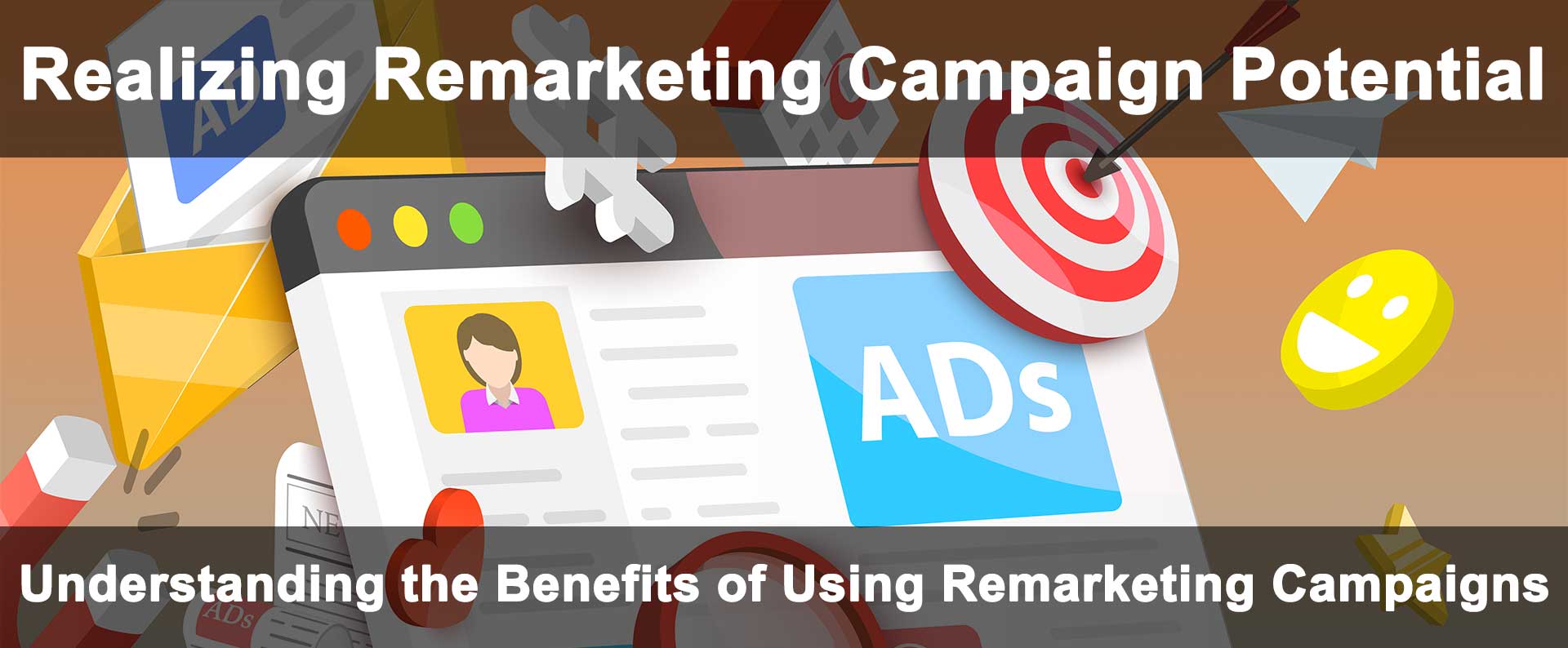In today’s competitive world, it’s important for small and medium businesses (SMBs) to leverage every possible opportunity for engaging potential customers and convert them to sales. Remarketing is one such popular method of maximizing your marketing budget, while achieving improved returns on investment (ROI).
Defining Remarketing Campaigns
Put simply, remarketing is the process of targeting users who have already interacted with your company brand, visited your website, or performed specific actions (such as adding items to their cart, but failing to complete the purchase).
The goal of remarketing is to increase the likelihood of converting these users into customers and purchasing by sending them targeted ads to re-engage them in hopes of bringing them back to the site to complete the purchase or desired action.
Using cookies or pixel-based tracking, remarketing campaigns will serve personalized ads to users as they browse other websites and social medias, nudging them to complete the goal of purchasing, signing up for a newsletter, or other desired end-goal.
Benefits of Using Remarketing Campaigns
- Increased Conversion Rates
Remarketing enables you to re-engage with users who have already shown interest in your brand’s products or services, improving the likelihood of them converting. Reminding prospects of their initial interest significantly boosts possible conversion rates compared to traditional advertising methods.
- Improved Brand Awareness
Continued exposure to your ads helps reinforce brand awareness, recognition, and recall. Even if users don't convert immediately, repeatedly showcasing your ads to potential customers helps you stay top-of-mind, strengthening the chances they will choose your business once ready to purchase.
- Cost-Effective Advertising
Using remarketing campaigns allows you to focus advertising efforts on a specific targeted audience, which often in turn will maximize the overall return on investment. By targeting users that have already shown interest in your products or services, the chances of achieving conversion are much higher and more cost-effective compared to broader marketing strategies.
- Customized Messaging Opportunities
Remarketing campaigns allow for targeted and personalized messaging campaigns. By segmenting audiences based on behavior, such as visiting specific product pages or adding particular items to their cart, you can tailor your messages accordingly to overcome common objections to lead the user to convert to a sale.
Running Remarketing Campaigns Efficiently, Affordably & Effectively
- Set Clear Objectives
For a campaign to be successful, it’s important that you set clear, defined goals. Having clear objectives will help you customized and tailor the campaign strategy for success. Whether the end goal is increasing signups, promoting your product or service, a well-defined objective will not only guide your strategy, but also help measure its overall success.
- Choose the Right Platforms
Identifying the platforms that resonate and align with your target audience and end goals are imperative for success. Google Ads and Facebook are the two most well-known platforms, but there are others including Instagram and AdRoll amongst others depending on your particular target demographic and niche. Consider using multiple platforms as well as other targeting factors such as ad format when making a decision.
- Segment Your Audience
It’s often necessary to segment your audience based on their behavior and site engagement as not all users have the same level of interest or purchase intent. Segments could be based on factors such as cart abandonment, versus viewing specific product pages, or newsletter signups. This will allow you to create a more personalized and effective targeted campaign.
- Design Compelling Ad Creatives
Most any campaign success rate will rely heavily on the relevance and quality of the ad creatives used. The use of high-quality images, engaging & personalized content copy, coupled with powerful call-to-actions (CTA) are often make or break factors in the overall success of a campaign. Always make sure that each ad is pertinent and relevant to the segment of your audience being addressed.
- Optimize Landing Pages
Using specially optimized landing pages for each campaign, and possibly even each audience segment, will help to ensure conversions. The ideal user experience will include clear CTA’s, fast and mobile-friendly loading times, with nothing to distract the user from completing the end goal of converting to a sale or lead.
- Monitor, Measure & Adjust
Consistently tracking key performance indicators (KPIs) like click-through rates (CTR), conversion rates, and cost-per-acquisition (CPA) are important for analyzing campaign performance, as well as adjusting tactics based on accurate historical data for optimization. A/B testing allows for finding out what ad creatives work best for various segments, while improving targeting options and bidding strategies for optimal performance.
- Leverage Frequency Caps
Avoid creating user ad fatigue while ensuring a positive user experience by setting caps on the frequency of how often certain ad creatives are shown to the same user. Keep the user’s experience intriguing and exciting with fresh ad creatives to prevent burnout, while building a positive brand image.
The Take Away
Remarketing campaigns are a powerful tool for SMBs to engage prospective customers, reinforce brand awareness, while increasing conversions and sales. Be sure to set clear goals, use the proper platforms, segment audiences with compelling ad creatives, optimize landing pages, and regularly monitor, measure and adjust.
Following this formula with allow you to successfully run remarketing campaigns that are efficient, affordable, and highly effective so you can watch your business grow and prosper.













